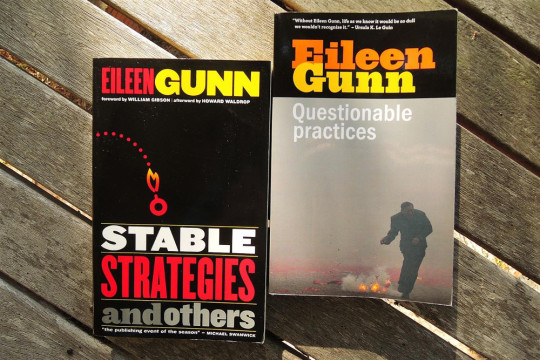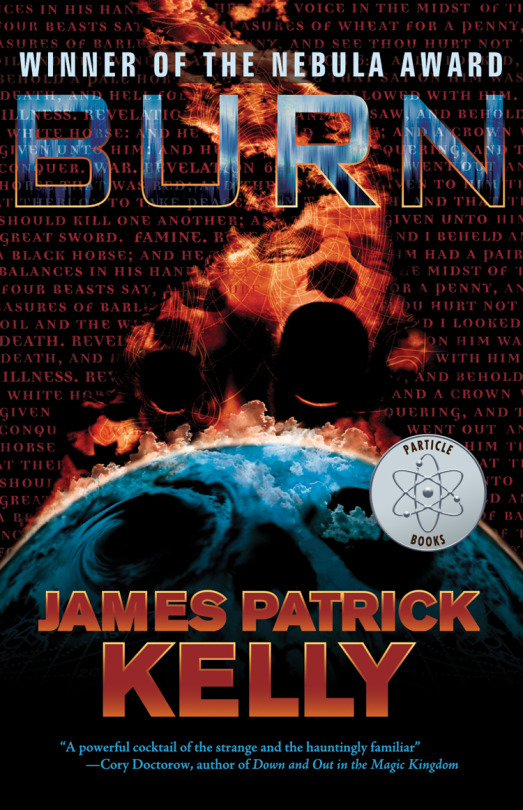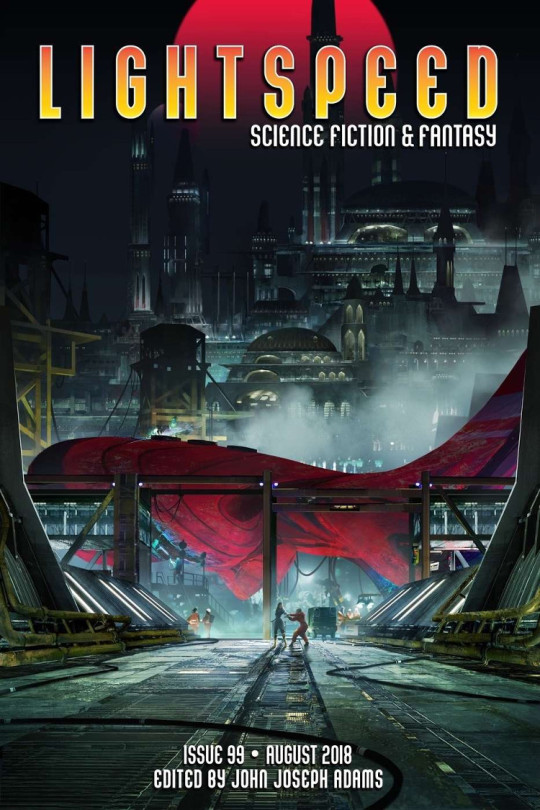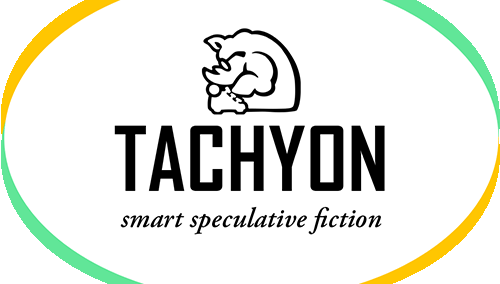Tachyon tidbits featuring Eileen Gunn, James Patrick Kelly, Joe R. Lansdale, and Kate Elliott
The latest reviews and mentions of Tachyon titles and authors from around the web.

Eileen Gunn (photo: Scott Edelman), James Patrick Kelly (Bill Clemente), Joe R. Lansdale (Karen Lansdale), and Kate Elliott (April Quintanilla)
Anna Tambour on MEDLAR COMFITS writes about Eileen Gunn.
I’ve been, frankly, chicken to write about Eileen Gunn’s fiction, because she’s done so much that is important, and her scope is much greater than the books I’ve read to compare to, but I want to say something, so here’s my blurtings. I first fell in love with her stories from the collaborations with the equally intimidating to write about Rudy Rucker in Rucker’s insanely smart, fun, crazy online magazine Flurb: A Webzine of Astonishing Tales. (Gunn herself was the key miscreant responsible for an equally addictive but totally different webzine, Infinite Matrix.) But to get a proper dose of Gunn, there’s nothing to equal a collection.

These two important collections are like Gunn herself–so supremely cool in their lack of pose yet so richly diverse and deep and generous that you end up learning stuff you didn’t mean to, laughing wryly and getting on top of stuff that was destroying you, getting moved to move the immovable, even feeling deeply about someone you don’t necessarily want to be. Quite Marvelessly, Gunn does this to you with not a superhero in sight. I wondered about her sense of humour and satire, which makes me think first, of Gogol; second, of Norbert Davis; but third, of Nabokov, so I wasn’t surprised to learn she’s fluent in Russian, has lived in many places, and done a great many things, including being a key worker in a corporate hive.
Unlike many writers, especially those who’ve been moulded by an MFA, she doesn’t try to create an absurdity or sprinkle odd things in, or twist the plot, to make some nothingstory quirky.

For SFCROWSNEST, Andy Whitaker praises James Patrick Kelly’s BURN.
What follows is a tale of contrasting environmental, social and cultural viewpoints. It’s rather well done and the author has obviously spent quite a bit of time researching forest fires and how the fire teams respond to them. Prosper Gregory Leung has some hard choices to make providing he can survive the next forest fire.
There’s a good section following the story where Kelly describes how he came to write ‘Burn’. Prior to this he had been specialising in short stories and it does show in ‘Burn’. The book could do to be quite a bit longer as there is a lot of areas which aren’t fleshed out as much as they should be. The L’ung and particularly High Gregory remain an enigma as do the original inhabitants of Walden. There’s also a brief mention of some of the indigenous Walden wildlife and which also sounds interesting and I wanted to know more about them.
Now I’ve got my rant over with, let me say I enjoyed reading ‘Burn’. It’s a bit different which gives it a fresh appeal. I do think it’s a bit short but don’t let that put you off as it’s still a very good read.
The Austin Public Library VAN SHOW interviews Joe R. Lansdale.
LIGHTSPEED (August 2018, Issue 99) shares Kate Elliott’s “A Compendium of Architecture and the Science of Building” in both print and audio versions.
By the time he returned home after all his years of wandering, Magnus Diarisso had come to prefer a fire burning on cold days rather than the elaborate hypocaust system that heated the mage house. The sound of wood settling, sparks popping, and ashes sighing helped him relax.
He told his nephew the mansa, the powerful cold mage who was head of Four Moons House, that he did not want to live in the main house with its comings and goings and the children’s chatter and the inevitable intrigues and gossip. He wanted space to think, to at long last write the compendium of architecture whose composition he had had to delay time and again. After all, this too was part of a life’s work: to pass on what you knew to those who would come after you, to keep the chain of knowledge intact from one generation into the next.
A modest suite of rooms was built to his specifications alongside the carpentry barn: a small bedchamber and a spacious study where he could do architect’s work and receive visitors now that he was too old to comfortably travel. From this haven he supervised the four carpenters and the occasional village men brought in for larger projects.

Art by Waiji Choo
Laurel Amberdine follows up the story with a spotlight on Kate Elliott.
How does this story fit with your other works?
The story is set in the universe of the Spiritwalker Trilogy (Cold Magic et al, published 2010-2013), aka Afro-Celtic post-Roman Ice Age Regency-style fantasy adventure with Phoenician spies, hungry sharks, revolutionary sentiments, and lawyer dinosaurs. Over the last few years, I’ve been writing standalone short fiction set in this alternate history fantasy world to fill in events and details that fall outside the timeline of the trilogy itself.
Can you tell us what inspired you to write this story in particular?
Some months ago, a call went out for stories “celebrating masculinity” (you may recall the discussion that raced around Twitter and other spots online). As a feminist who has spent all of her career centering women in epic stories of adventure, I wanted to do my part. This story is a departure for me, featuring (as it does) only male characters (women are briefly mentioned but never seen). The main character, Magnus Diarisso, is in my opinion a fine role model for positive masculinity in a patriarchal, class-conscious, hierarchical society.
For more info about STABLE STRATEGIES AND OTHERS, visit the Tachyon page.
Cover by John D. Berry
For more info about BURN, visit the Tachyon page.
Cover by John Picacio
